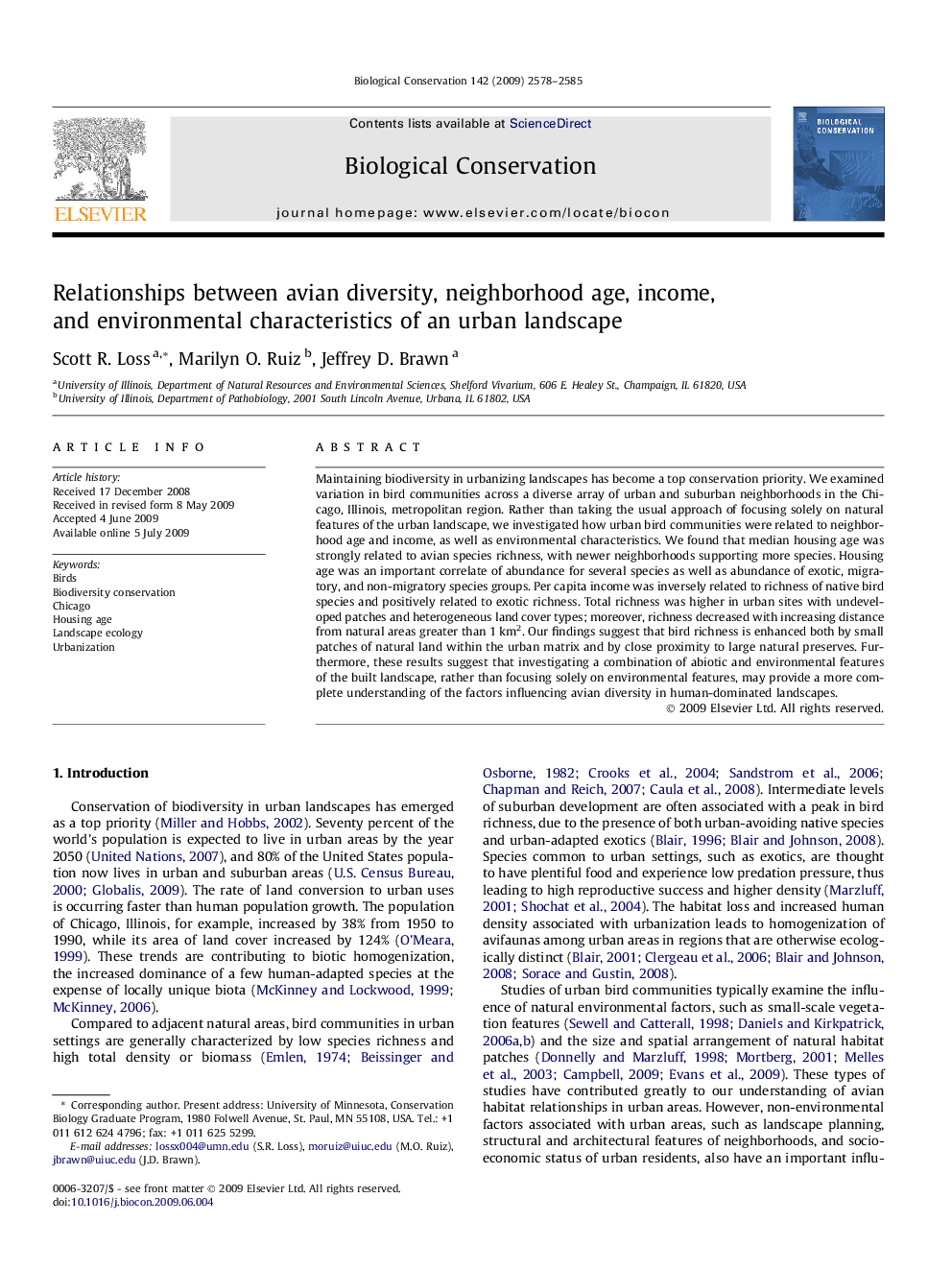| Article ID | Journal | Published Year | Pages | File Type |
|---|---|---|---|---|
| 4385860 | Biological Conservation | 2009 | 8 Pages |
Maintaining biodiversity in urbanizing landscapes has become a top conservation priority. We examined variation in bird communities across a diverse array of urban and suburban neighborhoods in the Chicago, Illinois, metropolitan region. Rather than taking the usual approach of focusing solely on natural features of the urban landscape, we investigated how urban bird communities were related to neighborhood age and income, as well as environmental characteristics. We found that median housing age was strongly related to avian species richness, with newer neighborhoods supporting more species. Housing age was an important correlate of abundance for several species as well as abundance of exotic, migratory, and non-migratory species groups. Per capita income was inversely related to richness of native bird species and positively related to exotic richness. Total richness was higher in urban sites with undeveloped patches and heterogeneous land cover types; moreover, richness decreased with increasing distance from natural areas greater than 1 km2. Our findings suggest that bird richness is enhanced both by small patches of natural land within the urban matrix and by close proximity to large natural preserves. Furthermore, these results suggest that investigating a combination of abiotic and environmental features of the built landscape, rather than focusing solely on environmental features, may provide a more complete understanding of the factors influencing avian diversity in human-dominated landscapes.
